Alessandro Cioffi has built his knowledge of visual effects by working in various studios in Italy, London or Germany. He participated to the compositing of such movies as 300, KINGDOM OF HEAVEAN or SWEENEY TODD. He joined Trixter in 2007 and NINJA ASSASSIN mark its first movie as visual effects supervisor.
Can you explain how to use your course?
I joined Trixter Film in late 2007. At that time I was just back from London, where I had worked as sequence lead on SWEENEY TODD at MPC. Trixter was busy preparing LILLI THE WITCH: THE DRAGON AND THE MAGIC BOOK, and chatting over a coffee with Simone Kraus, Trixter’s C.E.O., I was fascinated by her ideas for a modern European VFX facility and her plans to tackle the international movie scene within one year. So I jumped on board as a supervisor to help finish over 450 shots in compositing. That was an amazing time, but so many things have happened since, that it feels like ages ago!
What kind of VFX did you do on NINJA ASSASSIN?
On NINJA ASSASSIN, our task was to integrate many fighting scenes with CG weaponry, blood, severed limbs and all sort of gory elements that made, eventually, working on it very entertaining, I must admit. On some sequences we also contributed on developing the look, for example, in the Dojo scene lighting design and the chain trails.
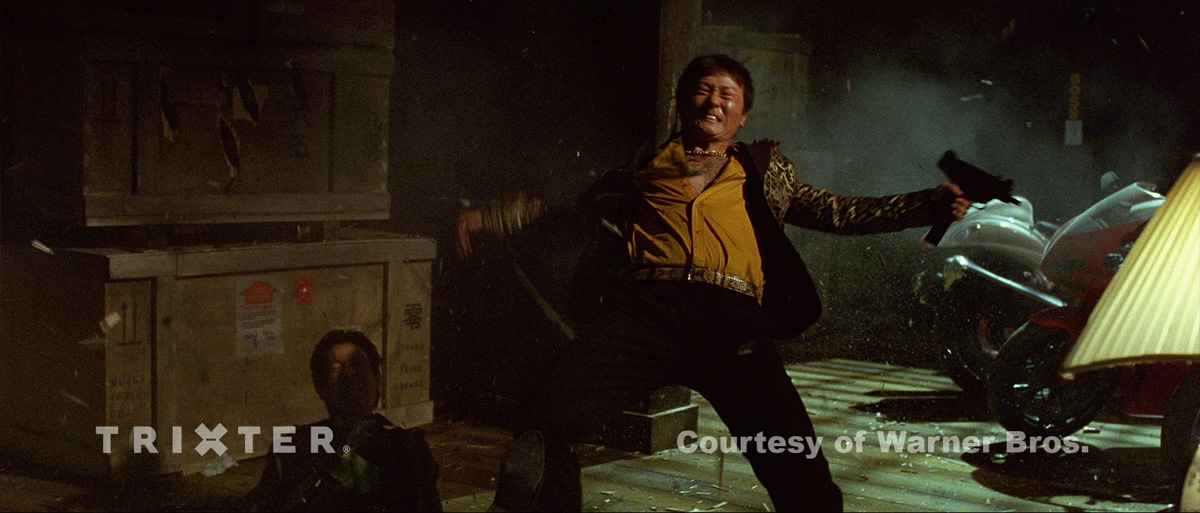 |
 |
Which are the sequences created at Trixter?
We worked on three main long sequences and a few shorter ones. We called the three main ones, internally, the red, the blue and the golden one, and it refers naturally to the dominant colours in the scene. The red one takes place in the nether floors at the detention centre where Raizo is kept, and it’s a long fighting scene where ninjas ambush the police special squads. It’s easy to see why we named it this way: the red alert lights are all on and visually dominate the pictures, enhancing the sense of constant danger. In this sequence blood profusely flows as shurikens and blades shine in the darkness.
In the blue scene the absolute protagonist is Raizo and his chain: it’s like a long lethal dance in which the weapon becomes like an extension of his arms. He’s surrounded by hostile ninjas, and dodging katanas and ducking out of the way of shurikens flying all over, he unleashes his chained knife and annihilates his challengers.
The golden one is the one I prefer. It’s the big showdown in the Dojo and Raizo here finally faces his rival Takeshi. It’s a great location, the roof is literally on fire and the entire fight takes place under a rain of embers. The challenge here was to render the interaction between these burning CG elements and the slashing weapons. Moreover, the blood, and all the weapons in the scene are digital.
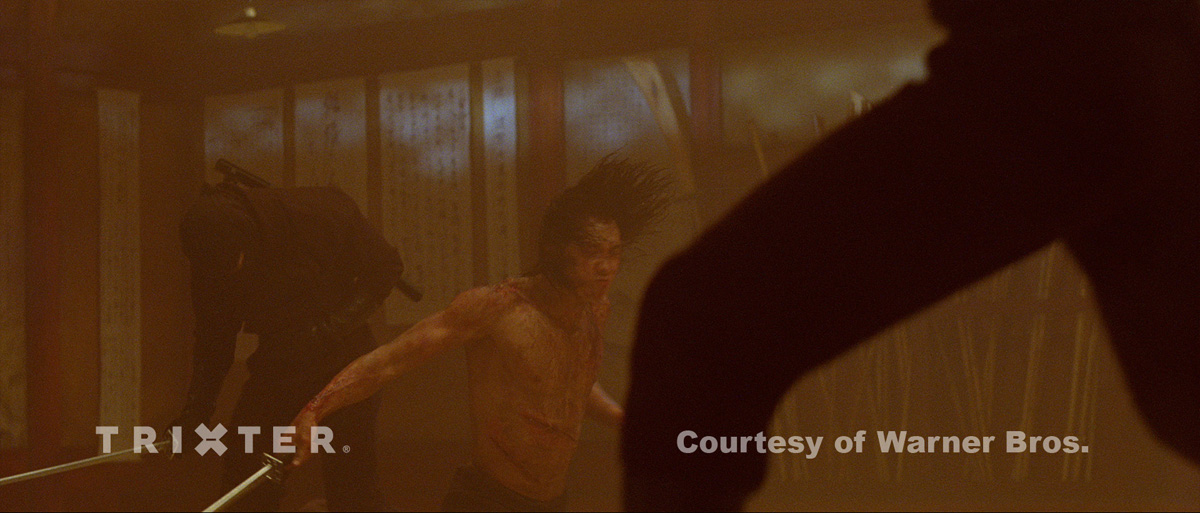 |
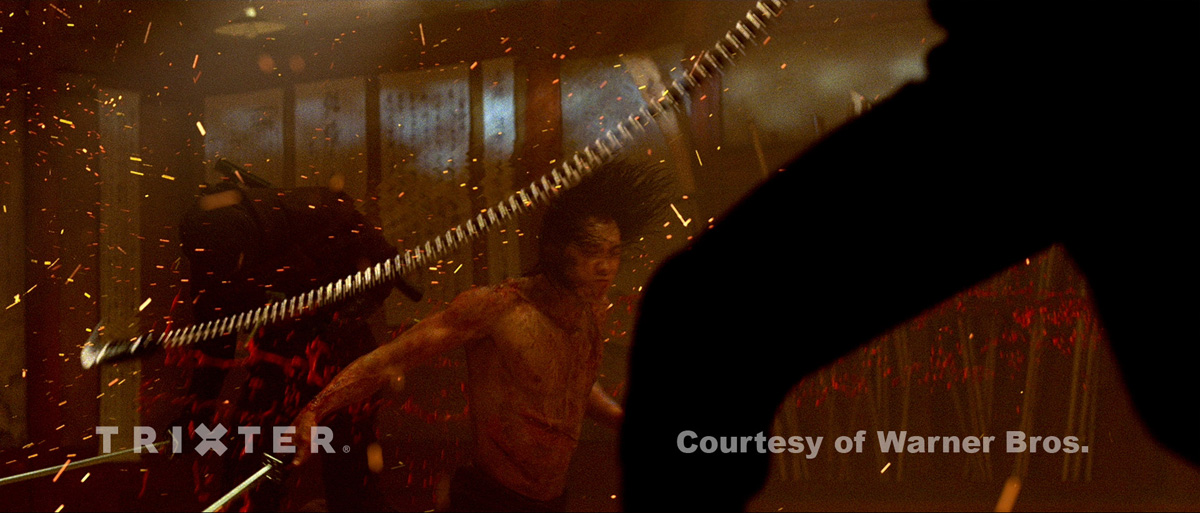 |
How was your collaboration with the American VFX supervisors?
That was excellent and very profitable. In a first phase we were in touch with Chas Jarret, whom I knew since my first experience at MPC in 2003. As set supervisor he led us through the breakdown and gave us the first base lines during an initial testing phase. After that, we started working with Dan Glass, the main VFX supervisor on the show, with whom we immediately established a very solid communication line through frequent calls and videoconferences, almost on a daily basis. During the final five months of production, VFX supervisor Christopher Townsend was here with us, responsible to Warner Bros, for the vendors located in Europe. This time was particularly fruitful as we could get continuous feedback from Chris, and that was an enormous help for us to streamline the production. Besides, we could appreciate a great professional, learn from him and, after so many weeks of hard work, side by side, become eventually good friends. We are still in touch.
The VFX were made, for the greater part, in Europe. How was the exchange between the various studios?
As I said, Chris Townsend was weekly touring among the European vendors and that was essential in order to keep the consistency throughout the visual effects. Officially, we were never really in contact with the other companies involved, but it happened a couple of times that, in an informal way, my colleagues and I, who happen to be friends in many cases, consulted with each other, sharing impressions and thoughts. In general, the atmosphere has always been very cooperative.
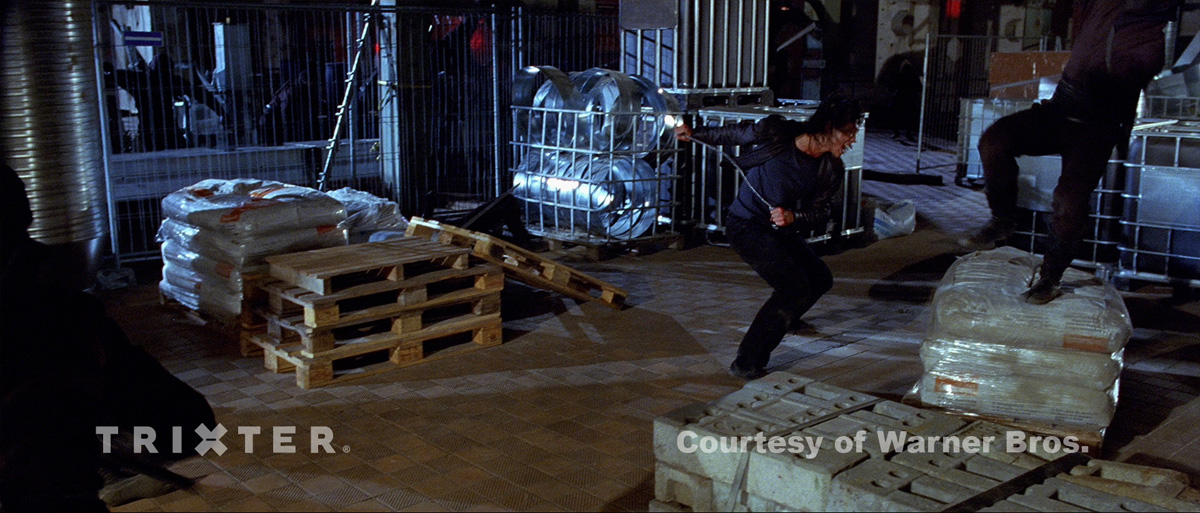 |
 |
Was there a studio whose work served as a reference, and on which the other studios aligned themselves to make elements consistent, like, for example, the blood sprays?
There were a few cases in which we shared some reference pictures with other vendors in order to preserve the visual consistency or the continuity within the sequences. For example we came up with a good solution for the chain trails, a sort of energized warping trace behind it, which visually emphasizes the way the chain draws its shapes, almost by sculpting the space around Raizo. On the shurikens’ trails there was an intense exchange of references with Ghost FX, in Denmark. Very effective, and as I said, the cooperative spirit among us European vendors under Chris Townsend’s coordination, did help to streamline everyone’s production.
The blood is a different case. Initially the plan was to use practical blood, shot separately on green screen and organized in a pretty vast library of elements, and only enhanced with some CG fillers. That worked just fine for some shots, which eventually resulted even too sanguinary for the Director’s intentions. By the way, at one point, after a breathing space, Production decided that using CG blood throughout the entire movie was the way to go, so we had to rework some shots to meet our clients’ wishes. At that time Pixomondo, in Stuttgart, already had some shots involving CG blood that were in quite an advanced status of production, and they provided us with some visual references. And it’s quite interesting how, subsequently, we all developed a sense of aesthetics for the blood, commenting at times about some particularly successful simulation with real cheers of enthusiasm.
How many shots did you work on?
With over 170, we completed more shots than anyone else on the film, and they were all delivered on time. These are facts of which we are particularly proud.
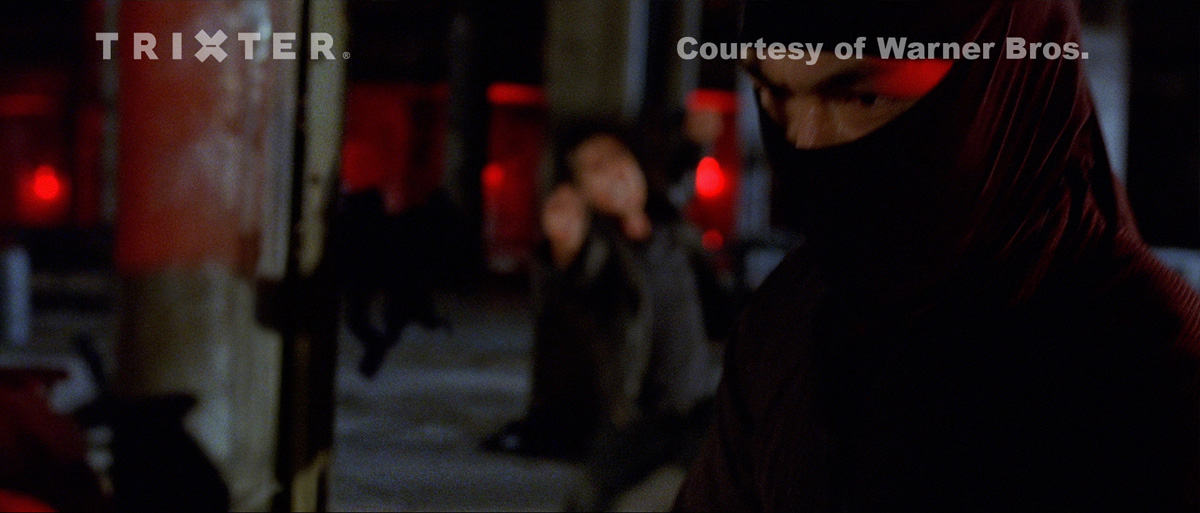 |
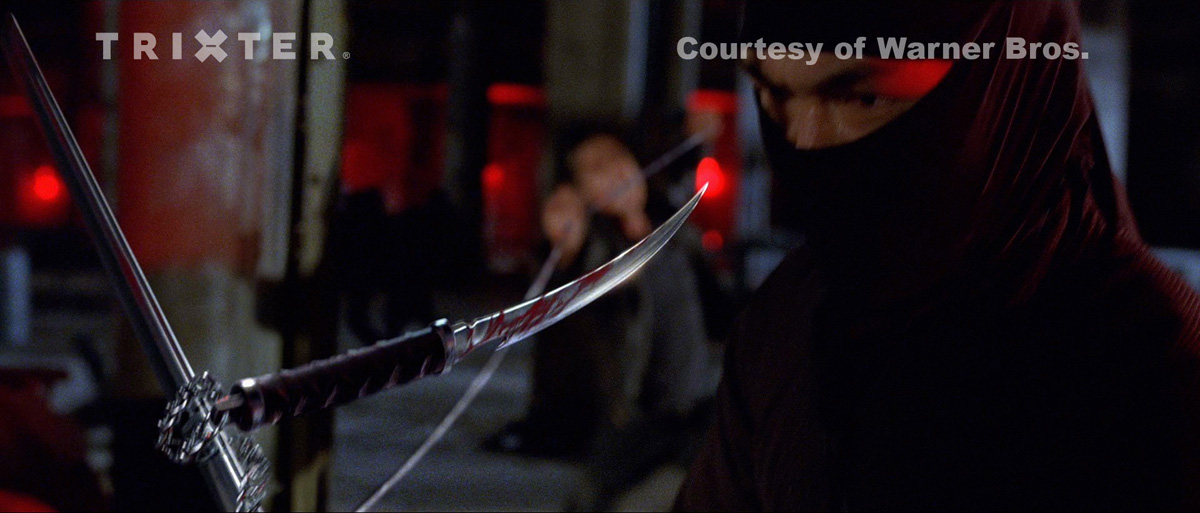 |
How did you prepare a shot that involved CG weapons?
Each weapon needed a different approach. For swords, sabers and katanas, we accurately remained faithful to realism, by matchmoving locators the actors were wielding and replacing them with the CG assets. Sometimes we had to correct their positions in order to create more dramatic actions. For the shurikens, the only limitation was the exact moment of launch, for the rest we had total freedom to define trajectories and design them as spectacularly as possible. Often Dan Glass had very precise ideas about the shurikens’ traveling paths.
Most interesting for us was working on the chain weapon animations though. As mentioned before, in many fights Raizo wields this long chain with a sharp knife and an iron ball at the two ends. An extremely lethal weapon, Raizo almost dances with it, a fact that made those sequences both challenging and exciting for us at the same time. Director James Mc Teigue’s wanted us to think that the chain was inspired by its own self, almost alive, so to speak. Besides, he wanted to see the chain tracing real eye-catching shapes at key moments of the fights. In short, two tasks in one: credible motions but very graphical at the same time. Under Simone Kraus’ supervision, our animators therefore tackled this task as the chain was a ‘character’ itself, although with an attention on real physics and dynamics. It was really fun for all of us seeing how the chain drew more and more sinuous lines, refining its path version after version. The results were amazing, and everyone was delighted with their own work.
Did you meet some difficulties?
As I mentioned before, when Production suddenly veered off and decided to go for CG blood throughout the whole film, this found us slightly off balance. We had more compositors than effects artists in our crew, so we had to react very swiftly. Our VFX Producer Georg Wieland did a fantastic job by filling the crew gaps in no time and providing us with the right resources to complete the task.
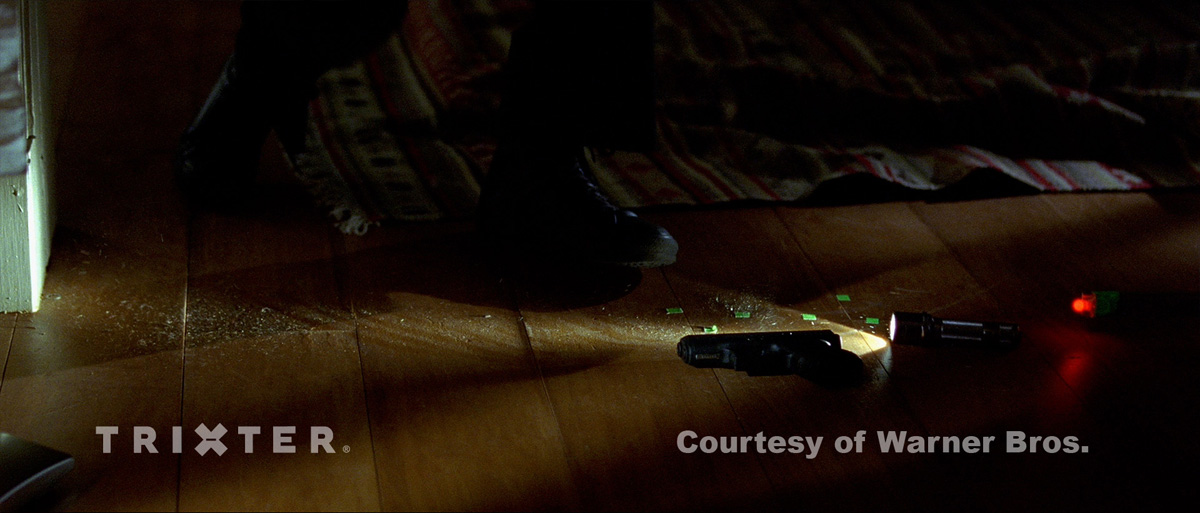 |
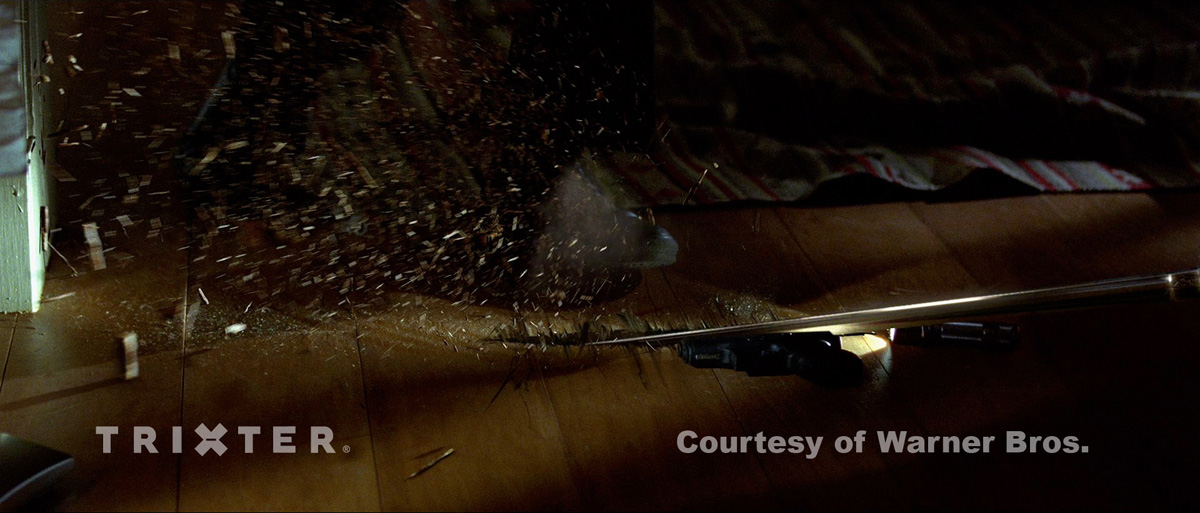 |
What was the most complicated sequence to achieve?
The sequence in the Dojo, what we called the golden one, presented a certain level of complexity. All the assets are present there: there’s CG blood, there are swords, sabers and chains, severed limbs and there are CG embers falling from the burning roof. And we wanted to create a more attractive look by introducing shafts of light coming from the windows. Here the action is very elaborate and it involves Raizo, four more ninjas and finally Takeshi. The intention was to wrap the scene with embers without hiding it, and to make the interaction between swiping weapons, acrobatic stunts and embers not only credible but spectacular as well. The embers dragged around by the air turbulence and depressions, rapid accelerations and sudden slow downs enhanced all the dynamics. We even considered relating their temperature, their intensity, to their speed in the action. So we rendered a secondary velocity pass the compositors could use to adjust their color correction on the embers. Other tools were in use to fine tune the density of them, in order to evenly fill the space and occasionally recalibrate their distribution. I am particularly happy with the result, but what counts the most is that so was the client.
 |
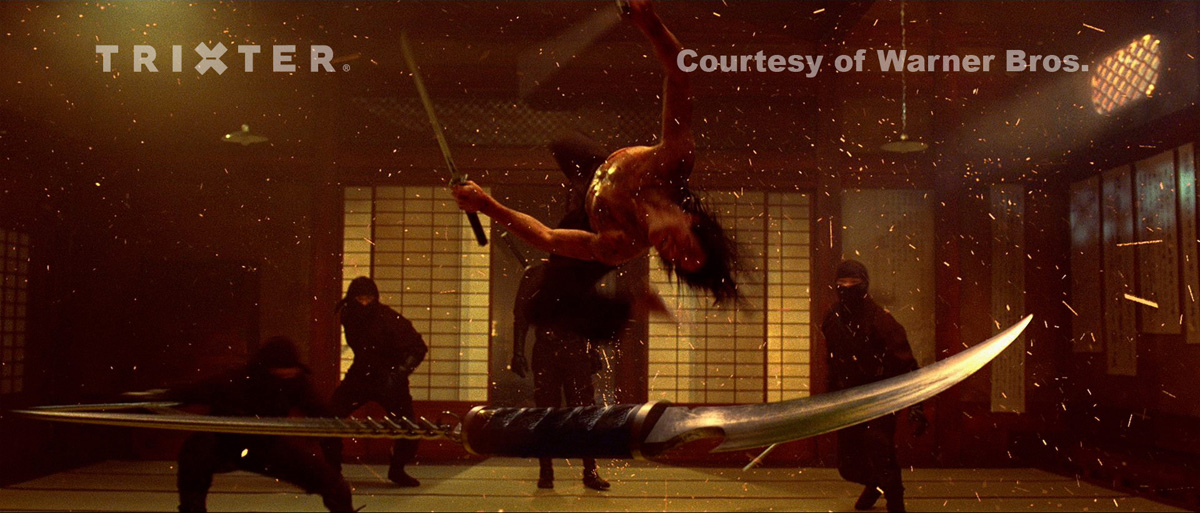 |
What is your pipeline at Trixter?
Our pipeline is very straightforward and flexible. Its core is the database, where all the considerable information is stored about projects, shots, assets and elements. Data is first loaded into Equalizer for scene creation and layout. Once scenes and matchmoves are released, together with any additional information, like lens distortion values, they are sent to the compositing department for undistorted plate creation then animators can load the scenes into Maya and start their setups.
The color space is entirely linear, therefore, parallel to the above mentioned process, all the scans are being immediately linearized and undistorted for lighting TDs’ use. Lead lighting TDs normally build setups for whole sequences in order to preserve consistency and to streamline the production up until further lighting refinements. A first lighting pass is generally good for temp deliveries.
On NINJA, because there were so many metal elements involved, we had to rely on the delivered HDR images, even though often we had to color correct and modify them for our needs. Michael Hipp, resident Lighting/Rendering Lead at Trixter managed, together with a team of three artists, to provide about 40 temps within two days! Their pace was impressive and absolutely essential in order to work successfully with international productions like NINJA or PERCY JACKSON.
Once animations are approved we proceed to final lighting and rendering, which is carried out through Renderman. Usually we use vertex-caches for rendering, but for Ninja Assassin we used animation curves, mainly because of the chain’s hundreds of links and to obtain smooth subframe motion blur. Rendered linear OpenEXR files are then released to the Compositing artists who can flawlessly rebuild the element’s shaders in Nuke and integrate them into the plate.
For every show we write a number of additional specific tools to integrate the pipeline; for Ninja for example, we wrote a few rigs and shaders for animating and rendering shurikens and for the chain trail creation, but the backbone remained substantially the same. Modeling, rigging, texturing and shading steps within the pipeline, naturally completes our asset creation workflow.
What memories do you have of this show?
Excellent, I’d say. It has been an incredibly educational experience for many of us at various levels. For the company it was the first time it was confronted with a Hollywood studio production and, considering the budget limitations and the tight schedule, it was definitely a success. For some of our artists, it was a splendid occasion to prove their skills on such a challenging test and finally for myself, it was a great opportunity, after having supervised some compositing work on other shows, to lead an entire team for the first time on an important international production. In short, a fantastic challenge which is rewarding in itself.
With 2012, PERCY JACKSON and now NINJA ASSASSIN, the German companies have become very attractive in the visual effects market. How do you explain that?
There are a number of factors in game. Firstly, there’s a feeling of trust towards the European companies in general. European artists have, over the years, built an enormous legacy in terms of knowledge, experience and skills. Together with some pure talent, European companies have brought these resources back home and can offer a valid alternative, with reliability and quality for the international market. It is worth remembering that the vast majority of German companies, just like in the rest of Europe, are small or middle sized facilities which are able to control costs, to stay in the budgets, which translates to good flexibility financially, making them competitive on the international scene, combining high quality standards and attractive prices.
Quality, knowledge, experience and cost-effectiveness are, in my opinion, the key words describing the actual success of some European companies in today’s visual effects scene.
Trixter works on some big projects. Did you have to make changes with the crew and hardware?
The changes we have been through since my first arrival at Trixter, have been massive, structural, I would say. First of all, the technology: in the last year we basically doubled our render power, made a radical change in the general operating system, switching to Linux, and also replaced 80% of the workstations with a more up to date configuration. In the compositing department we’ve completed the migration from Shake to Nuke and provided every work station with A-class calibrated monitors. But the fact that pleases me the most is that the core team is substantially the same. Some additions have enriched the knowledge pool, but also some of our younger juniors have grown with us. In general the crew has increased by about 20%.
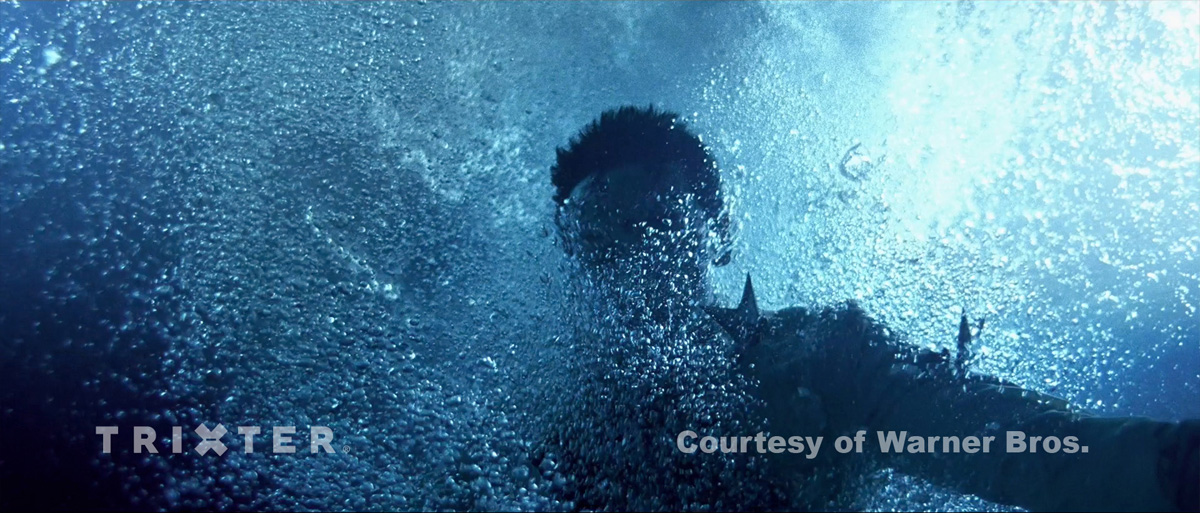 |
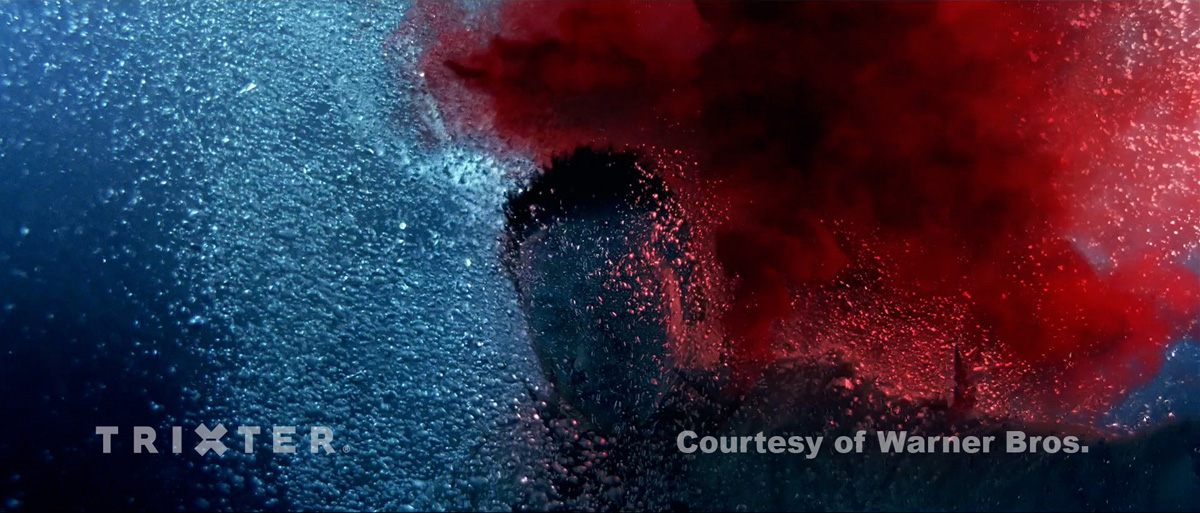 |
What is your next project?
There are several projects on the go for 2010. LILLI THE WITCH 2: THE JOURNEY TO MANDLOAN is already in post-production and will keep Trixter busy for the next few months. Other international collaborations are under discussion right now. On LILLI 2, I’ll be supervising the compositing again.
What are the 4 movies that have given you a passion for cinema?
It’s hard to say which movies in particular; I would more talk of Directors and movie makers. My fascination for movies started when I was just a little kid and I used to sneak in to the open air projections my father was organizing for his friends during summer holidays. That was in the early 70s and I remember how I was absolutely bewitched by the genius and the radical diversity of Sergio Leone’s movies. I was attracted by this new figure of a hero, for me completely new, no longer sharp and clean and captivating but dirty, ugly and even brutal; I was impressed, but it was only after a few years that I consciously realized the modernity of the photography, the antagonism of his cinematography. This first imprinting was confirmed by all the movies I loved afterwards, among which I wish to mention Spielberg’s DUEL, Scorsese’s TAXI DRIVER all the way up to Jim Jarmush’s DEAD MAN and the Coen Brother’s FARGO.
And if you wonder why I haven’t mentioned any VFX movies, well, I can only say that when I saw Ralph Bakshi’s The Lord of the Rings in 1978, which I totally loved, I thought, hey, there must be a way to do that even better….
Thanks for your time.
© Vincent Frei – The Art of VFX – 2010
For more information about the visual effects done by Trixter on NINJA ASSASSIN, go see their special page.







Thanks for this great interview Vincent 🙂
.*` I am really thankful to this topic because it really gives useful information –:
Great story it is without doubt. My boss has been awaiting for this info
Hi there I am so thrilled I found your weblog, I really found you by mistake, while I was researching on Google for something else, Nonetheless I am here now and would just like to say thanks a lot for a incredible post and a all round enjoyable blog (I also love the theme/design), I don’t have time to read it all at the minute but I have book-marked it and also added your RSS feeds, so when I have time I will be back to read a lot more, Please do keep up the great job.
You can certainly see your skills in the work you write. The world hopes for more passionate writers such as you who are not afraid to mention how they believe. Always go after your heart.
nice post..keep blogging